Pictorial Chronology of the Gene
|
350 BC
|
Aristotle
- in his
"Generation of Animals" he describes breaking open
fertilized chicken eggs at intervals to observe when visible
organs were generated and suggested hereditary information is
passed as messages.
|
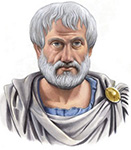
|
1859
|
Charles
Robert Darwin - (1809-1882) - his Origin of
Species proposed that all species of life have
descended over time from common ancestors and evolution
resulted from natural selection.
|

|
1865
|
Gregor
Johann Mendel - (1822-1884) - his cross
breeding experiments with peas established many of the rules
of heredity, especially the distribution "particulate units"
of heredity.
|
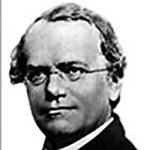
|
1869
down |
Francis
Galton - (1822-1911) coins term Eugenics
- Nature vs. Nurture debate -. Did 1st twins
studies and proposed selective breeding of humans
between families of high rank would lead to an to
improved humanity.
|
 |
1900-09
|
Wilhelm Johannsen - (1857-1927)
coins term Gene...
William Bateson - (1861-1926)
rediscovers Mendel's work.
|
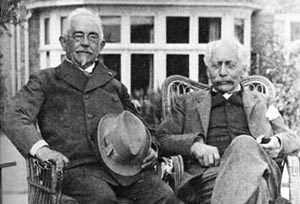
|
1908-15
|
Thomas
Hunt Morgan (1866-1945) - discovered genetic
linkage and crossing over while mapping genes, predicting that
a single chainlike molecule carries the genetic information.
He won the 1933 Nobe Prize in Physiology or Medicine for
discoveries elucidating that genes reside on chromosomes and
play a role in heredity.
|

|
1927
down
|
Carrie
Buck (1906-1983) - a plantiff in US Supreme
Court (Bell v. Buck) who was compulsorily sterilized as part
of a eugenics effort in U.S. In 1920s women classified
as "imbeciles" were routinely sterilized at
institutions as the Virginia State Colony for the
Feebleminded. From
1920s to 1940s eugenic
sciences were to select healthier & more accomplished
Humans. |

|
1933-39
|
German State
& Eugenics - Nazi doctrine of
racial hygiene prompted vast state sponsored effort to
cleanse the Human race through sterilization, confinement and
murder. Genetic twin studies were used to prove the power of
heredity influences and men, women and children were
exterminated based on the assumption they carries defective
genes. The Nazis pursed their eugenics efforts in the Holocaust
exterminating Jews, Gypsies, dissidents, and homosexuals.
|

|
1944
|
Oswald
T. Avery (1877-1955) along with co-workers
Colin MacLeod & Maclyn McCarty establish that isolated DNA
is the material of which genes and chromosomes are made.
|
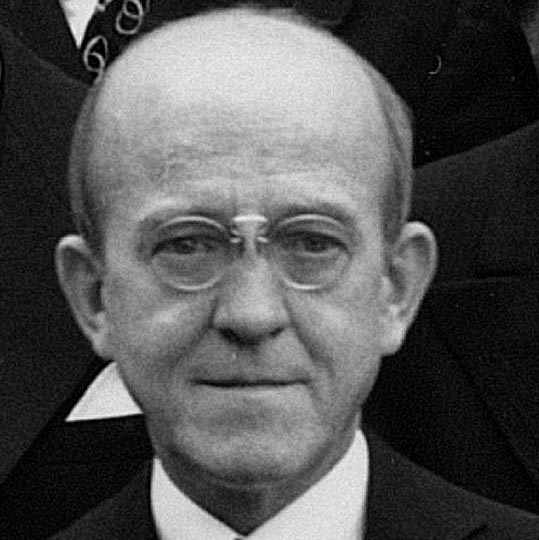
|
1952
down
|
Rosalind
(Rosie) Franklin (1920-1958) an English
chemistry and X-ray crystallographer whose X-ray diffraction,
photo 51 (taken by tech Raymond Gosling under her supervision)
was critical evidence that the structure of DNA has a helical
nature of double strands. Watson and Crick's calculation from
Franklin photo 51 provided crucial measurements for the size and
structure of DNA.
|

|
1953
|
James
D. Watson and Francis
Crick publish the structure of DNA in Nature:
737-738 (1953). Using X-ray diffraction and mathematics of a
helix transform, they establish that the structure of DNA holds
the chemical instructions of hereditary instructions.
"It has not escaped our notice that the specific
pairing we have postulated immediately suggests a possible
copying mechanism for the genetic material".
|
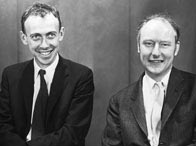
|
| 1945-1965 |
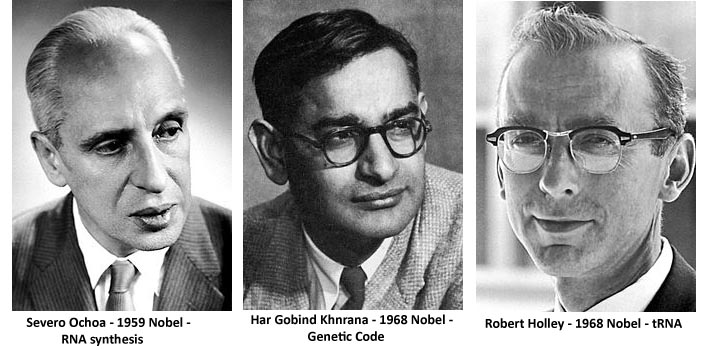 |
Central
Dogma of Molecule Biology
details of transcription, translation,
& Genetic Code established by Ochoa, Khorana, &
Holley... |
1968-1973
down
|

|
Berg,
Gilbert & Sanger created 1st recombinant
DNA molecules using restruiction enzymes
and established
DNA sequencing technology for Human
Genome Project
|
1975
|
Asilomar
Conference - brings a "moritorium" on recombinat
DNA... Creation of genetic hybrids along with gene cloning in
bacterial cells could have risks which might release unwanted
genetic anomolies?
|

|
| 1976 |
Genetech
- Paul Berg & Robert
Swanson (a venture capatlist) found company [Genentech]
to produce medicines from genes. First product produced in
bacteria by cloning was human gene for hormone somatostatin
(growth hormone). |
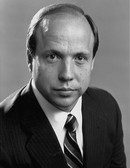 |
1990
down
|
SRY
gene determines maleness - Peter
Goodfellow discovers a transcription factor
protein encoded by SRY gene on Y-chromosome that initiates
male sex determination in humans. Swyer
syndrome is a mutation in SRY gene in which
genetic males (XY) are anatomically, physiologically, and
psychologically female. |

|
1994
|
Luigi
Cavalli Sforza (Stanford) - in a
massive genetic study establishes that there is greater
genetic variation within a racial category than genetic
diversity between different racial groups.
|
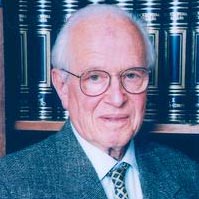
|
1998
|
James
Thomson (U.Wisconsin)
develops technique to isolate and grow human
embryonic stem cells in culture.
|

|
1995-1998
down
|
Gene
Sequencing - 1995 Craig Venter
sequenced Haemophilus influenzae; 1996 Saccharomyces
cerevisiae sequenced; 1998 John
Sulston publishes 1st genome of multicellular
eukaryote, C. elegans. |
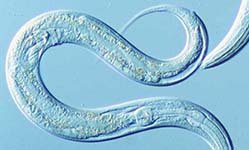
|
1999
|
Gene
Therapy - Jesse Gelsinger
died after a gene therapy clinical trial. He has OTC deficiency,
an X-linked liver enzyme deficiency due to a spontaneous mutation.
Injected with a recombinant adenoviral vector, he died after 4
days from a massive immune response to the virus, causing
cessation of gene therapy for many years. |
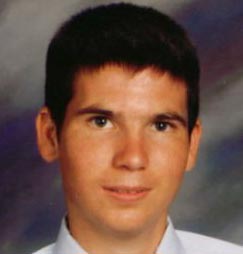
|
2000-2003
|
J.
Craig Venter & Francis
Collins - a copy of Human Genome is published.
A draft copy was released in 2001 and a finally declared
complete copy in 20013 using the data from 20 sequencing labs
around the world, the NIH and Celera Genomics (Venter's
private company).
|
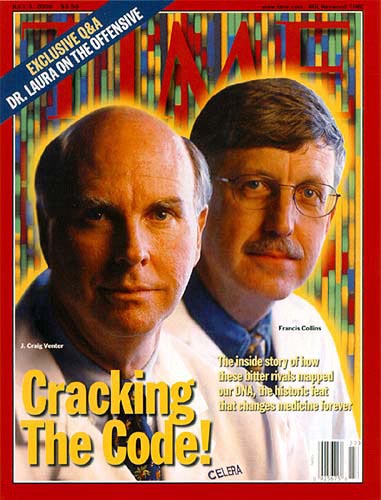
|
2005-2010
down
|
The
following whole genomes are fully
sequenced: (2004) brown Norway rat &
chicken; (2005) Cancer Genome Atlas initiated and the Pan
troglodytes (chimp) genome published; (2007) Wellcome Trust
publishes genetic variants for 24 common human diseases;
(2008) the Genetic Information Non-discrimination Bill signed
into law and International Genome Consortium is formed to
catalog genomic abnormalities in tumors of 50 types of cancer;
(2010) draft genome of Homo neanderthalensis is obtained from
38,000 year old bones.
|

|
| 2005-2016
|
Dubbed "Genome
Mining" genome
sequencing projects generate a tremendous amount of data,
which are stored in databanks and freely available through the
Internet. Using computers, scientists analyze these data to
extract information of genetic value. A new field, Bioinformatics,
integrates biology and computer sciences providing the
electronic equivalent of picks and shovels to prospect for
sequences. |

|
2012
|
Jennifer
Anne Doudna (Berkley) & Emmanuelle
Marie Charpentier (Curie U. Paris) reengineer a
Cas9 endonuclease along with a segment or bacterial guide RNA
that could find and cut target DNA specified by the guide RNA
that has potential for specific gene
editing.
|

|
2018
|
Samarth
Kilkarni, CEO of CRSIPR Theraputics in Cambridge Mass. has
requested approval from the U.S. Food & Drug Admin. to begin
clinical trials for sickle-cell disease in 1st half of 2018.
|

|
|
|
|
BACK
|
|
|
|
|
|























